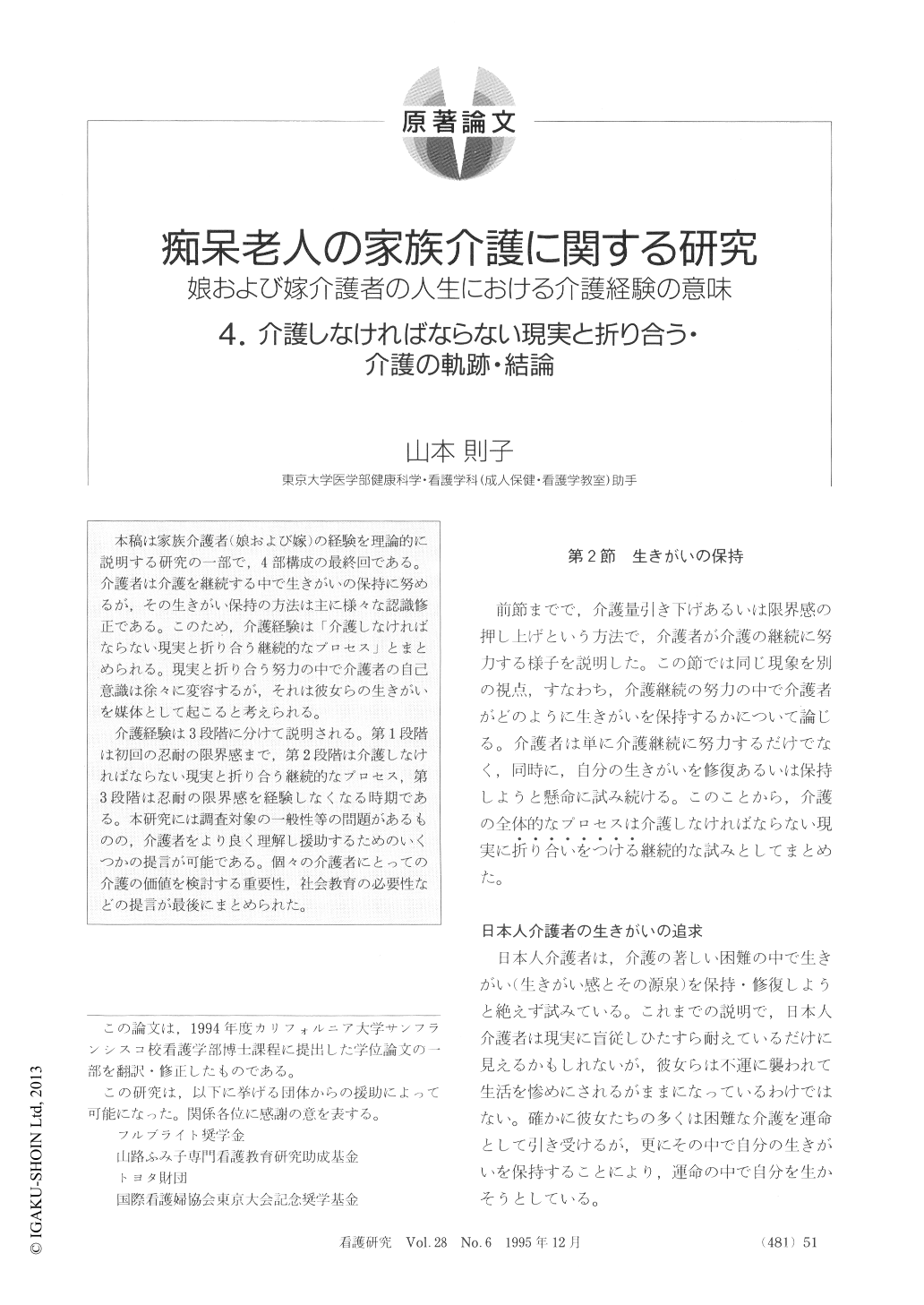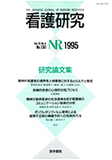Japanese
English
- 有料閲覧
- Abstract 文献概要
- 1ページ目 Look Inside
- サイト内被引用 Cited by
本稿は家族介護者(娘および嫁)の経験を理論的に説明する研究の一部で,4部構成の最終回である。介護者は介護を継続する中で生きがいの保持に努めるが,その生きがい保持の方法は主に様々な認識修正である。このため,介護経験は「介護しなければならない現実と折り合う継続的なプロセス」とまとめられる。現実と折り合う努力の中で介護者の自己意識は徐々に変容するが,それは彼女らの生きがいを媒体として起こると考えられる。
介護経験は3段階に分けて説明される。第1段階は初回の忍耐の限界感まで,第2段階は介護しなければならない現実と折り合う継続的なプロセス,第3段階は忍耐の限界感を経験しなくなる時期である。本研究には調査対象の一般性等の問題があるものの,介護者をより良く理解し援助するためのいくつかの提言が可能である。個々の介護者にとっての介護の価値を検討する重要性,社会教育の必要性などの提言が最後にまとめられた。
This paper is a part of the research on the experience of Japanese women caring for an elderly parent (or parent-in-law) with dementia. This final paper explains : How the caregivers attempt to maintain their ikigai (psychological well-being) while continuing care ; the overall trajectory of caregiving ; and conclusions.
The caregivers' struggle to maintain their ikigai while giving care is conceptualized as 'constant attempt to come to terms with the reality of having to take care.' Several strategies they use in order to maintain their ikigai are explained. While trying to come to terms with their reality, the caregivers' self-understandings gradually change via their ikigai. The overall experience of care is explained as a three-step process: “Initial undertaking” where the caregivers first enter the caregiver role; “coming to terms with the reality of having to take care;” and “permanent within limit” where they do not have to face their tolerance limit any more.
This research has limited generalizability primarily because all the interviewees had access to certain senior services and no one without any formal services was interviewed. Implications of the research include the importance of assessing the value each caregiver assigns to the caregiver role and the necessity of social education.

Copyright © 1995, Igaku-Shoin Ltd. All rights reserved.


